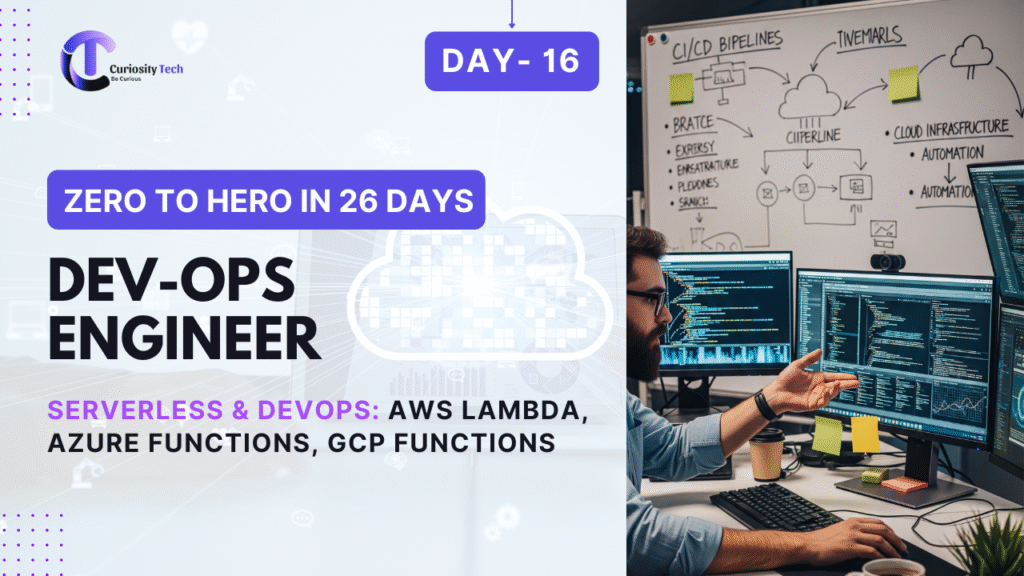Introduction
Imagine this: A fintech company handles millions of micro-transactions daily. Their engineers don’t want to manage servers. They want functions that scale instantly, cost only when used, and integrate across AWS, Azure, and GCP.
That’s the promise of serverless computing.
In single-cloud, serverless is straightforward. But in multi-cloud environments, things get exciting:
● AWS Lambda powers financial events.
● Azure Functions handle enterprise integrations (like Active Directory).
● GCP Functions process data pipelines into BigQuery.
At CuriosityTech.in, when we train engineers on multi-cloud, we show them how serverless can glue together different cloud-native services.
Section 1 – Understanding Serverless in Multi-Cloud
● Serverless = FaaS (Function as a Service)
● Write small pieces of code (functions) that run only when triggered.
● No provisioning or management of servers.
● Billed per execution.
Why Multi-Cloud Serverless?
● Reduces vendor lock-in.
● Lets you pick the best service per provider.
● Enables global high availability.
Section 2 – Serverless Services Compared
| Feature | AWS Lambda | Azure Functions | GCP Cloud Functions |
| Runtime Support | Node.js, Python, Go, Java, .NET | Node.js, Python, Java, PowerShell, C# | Node.js, Python, Go, Java |
| Max Execution Time | 15 minutes | 60 minutes | 9 minutes |
| Trigger Sources | S3, DynamoDB, API Gateway, EventBridge | HTTP, Event Grid, Service Bus, Blob Storage | Pub/Sub, Cloud Storage, Firestore |
| Scaling | Automatic (concurrency controls) | Automatic with Premium plans | Automatic |
| Pricing Model | Pay per request + duration | Consumption plan + Premium | Pay per request + duration |
| Integrations | Deep with AWS ecosystem | Deep with Microsoft/Azure ecosystem | Deep with Google Cloud ecosystem |



